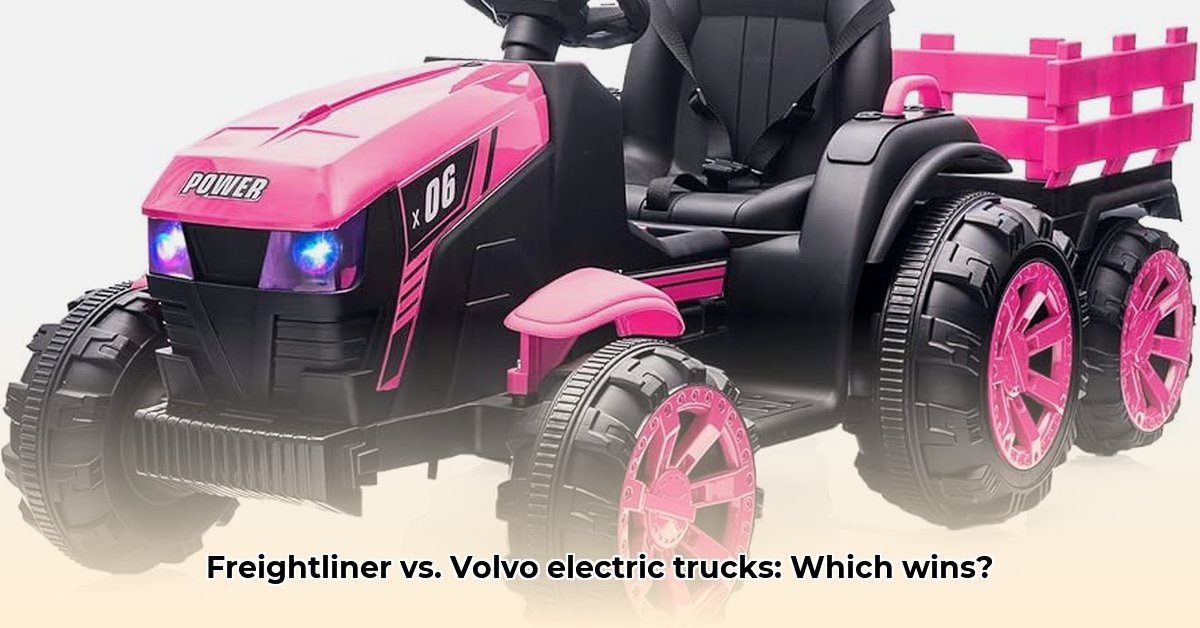
Choosing between the Freightliner eCascadia and the Volvo VNR Electric for your fleet requires careful consideration of several key factors. Both represent significant advancements in electric trucking, but their strengths and weaknesses differ depending on your specific operational needs and long-term goals. This comparison analyzes range, charging infrastructure, battery technology, total cost of ownership (TCO), and maintenance to help you make an informed decision. For more information on fuel tank sizes in traditional trucks, see fuel tank sizes.
Range and Charging Capabilities
A primary concern for fleet operators is range. The Volvo VNR Electric boasts a longer maximum range (up to 275 miles) compared to the Freightliner eCascadia (155-230 miles). However, these figures represent optimal conditions. Real-world range varies significantly depending on factors like cargo weight, terrain, and driving style. Similarly, charging times depend on charger power and battery size. Faster charging necessitates a higher initial investment in infrastructure. The availability of high-power chargers along regular routes is crucial, impacting the practical range of both trucks. Do you have ready access to sufficient charging infrastructure, or will significant investment be required?
Infrastructure and Support Networks
Freightliner's extensive dealer network provides a significant advantage, ensuring easier integration for many fleets. This familiarity and readily accessible support are potentially invaluable. Volvo counters with its Uptime Center, offering proactive monitoring and advanced tech support. This approach emphasizes predictive maintenance and remote diagnostics, potentially mitigating downtime. Which approach—established familiarity or technologically advanced support—better aligns with your fleet's operational strategy and current infrastructure?
Battery Technology and Degradation
Both trucks utilize lithium-ion battery technology, but the exact chemistry and cell configurations remain undisclosed by the manufacturers, making direct comparisons of battery degradation rates challenging. While projected lifespan is provided, real-world data on long-term performance in diverse operating conditions is limited. Factors such as temperature extremes, deep discharges, rapid charging cycles, and driving styles significantly impact battery longevity. The lack of extensive, publicly available data makes it difficult to definitively compare the long-term battery performance and cost of both vehicles. What level of risk are you comfortable taking regarding uncertainties in long-term battery maintenance?
Total Cost of Ownership (TCO)
The initial purchase price is only a portion of the TCO. Electricity costs, maintenance, potential battery replacements, and downtime all significantly contribute to long-term expenses. Volvo's leasing options offer a potentially lower barrier to entry for some fleets compared to the significant upfront investment required for purchasing a Freightliner eCascadia. However, a complete TCO calculation necessitates detailed operational data over an extended period, making precise comparisons difficult at this stage. How do the varying financial models—leasing versus purchase—impact your long-term budget?
Key Considerations for Different Stakeholders
| Stakeholder | Key Considerations |
|---|---|
| Fleet Operators | Upfront cost, range suitability, ease of integration, long-term maintenance costs |
| Infrastructure Providers | Demand forecasts for charging stations, power requirements, grid integration |
| Government Agencies | Incentive programs, emissions regulations, support for charging infrastructure development |
Conclusion: A Tailored Decision
The optimal choice depends entirely on your specific operational context. Freightliner offers established support and relatively straightforward integration. Volvo focuses on advanced technology and potentially longer range, but might require greater investment in infrastructure and training. Thorough research, considering your unique needs, and a realistic assessment of both trucks’ advantages and disadvantages are critical. The electric trucking market is dynamic; ongoing advancements will inevitably reshape the landscape.
Three Pivotal Points:
- Real-world data on battery degradation is currently limited, making long-term cost comparisons challenging.
- The availability of adequate charging infrastructure significantly impacts the practical usability of both trucks.
- The choice between leasing (Volvo) and purchasing (Freightliner) significantly alters the initial financial burden and long-term cost projections.